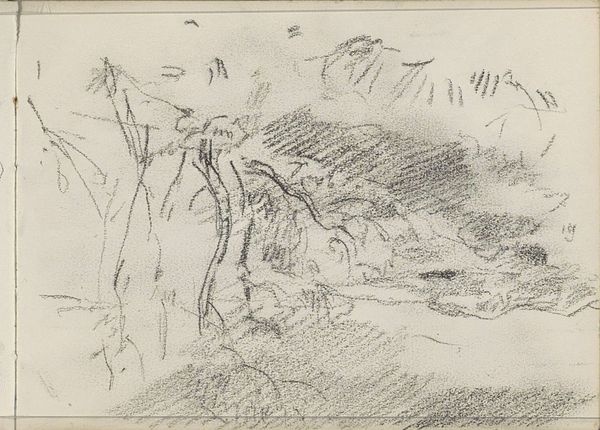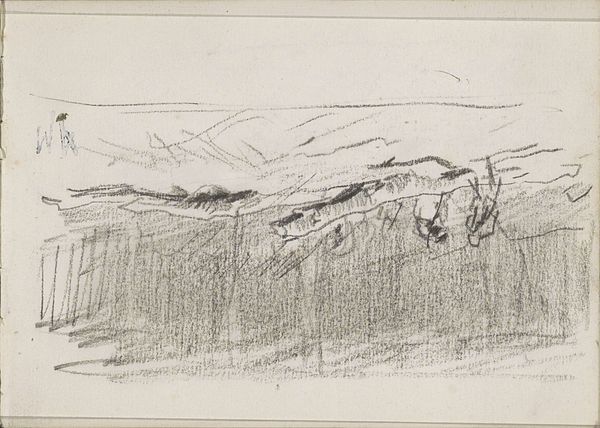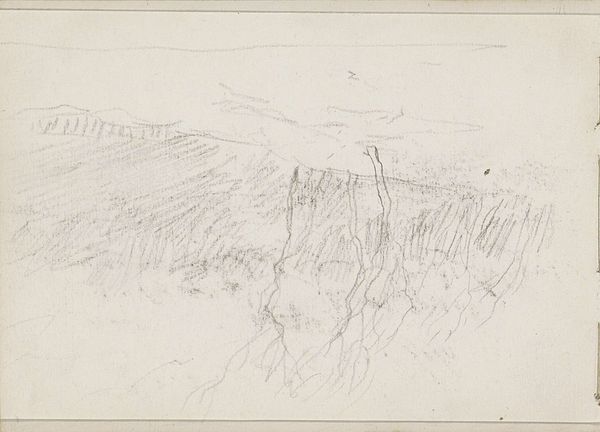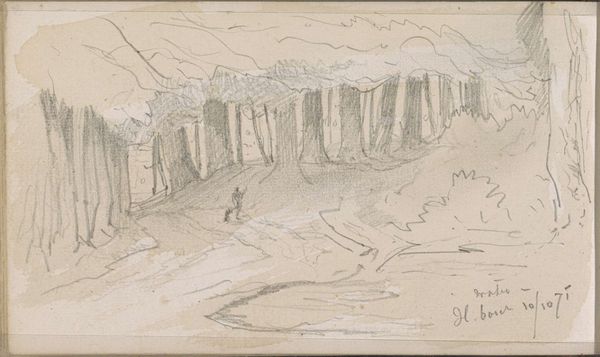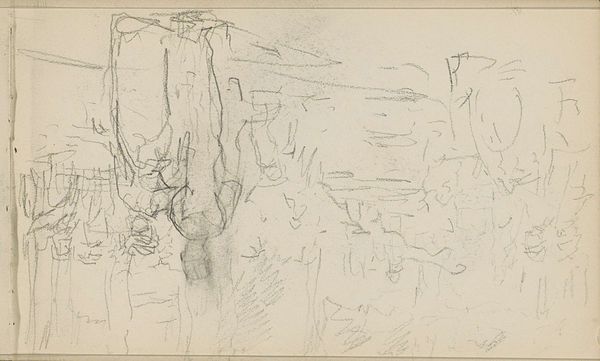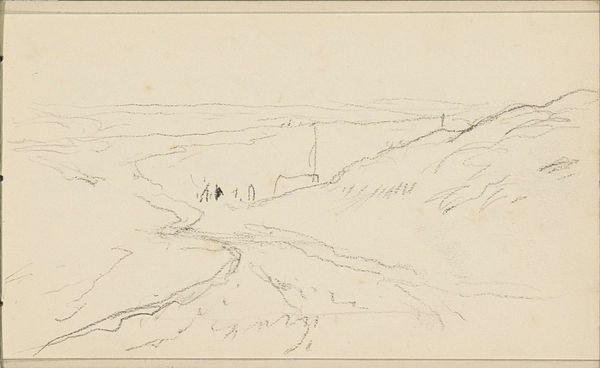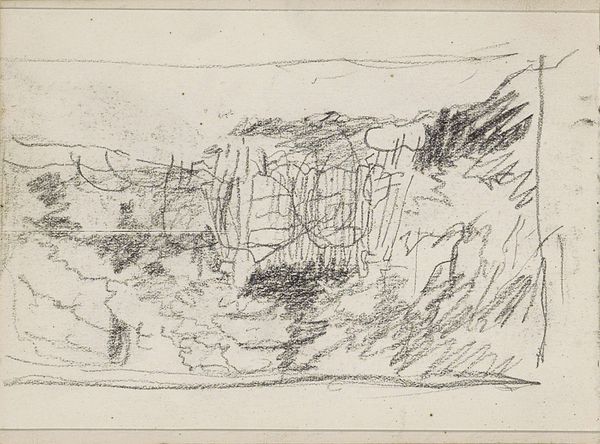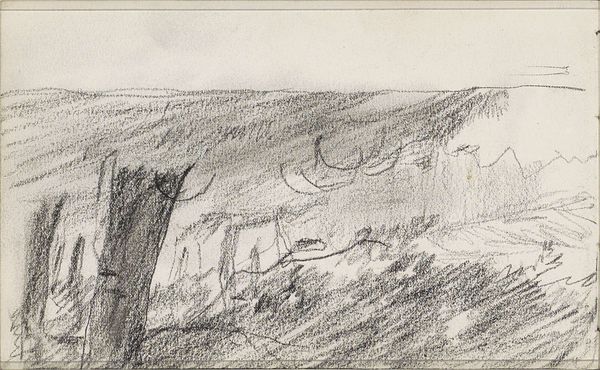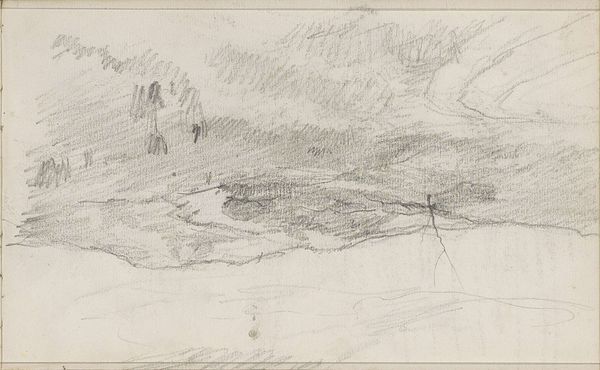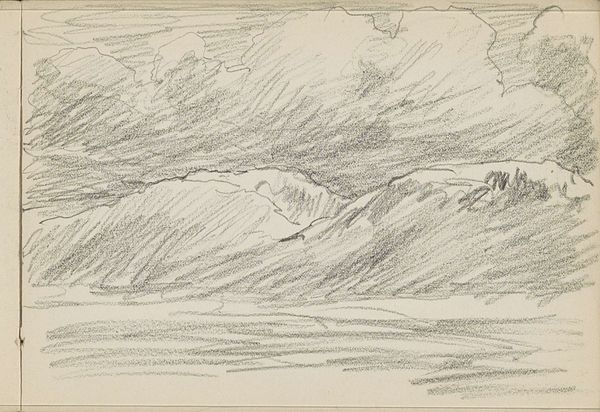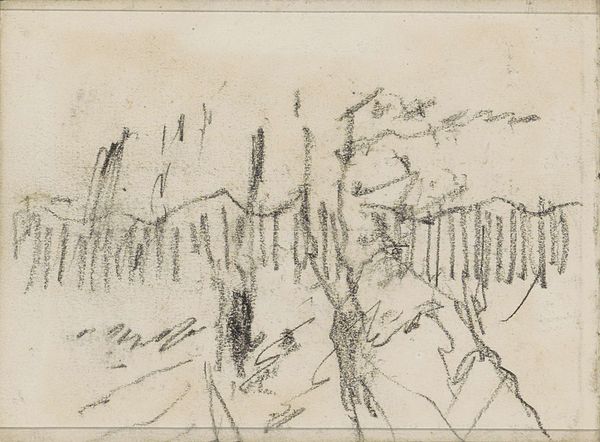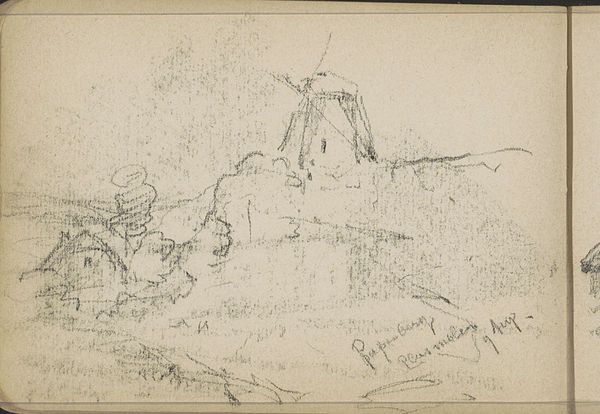
drawing, pencil, charcoal
#
drawing
#
amateur sketch
#
pen sketch
#
landscape
#
personal sketchbook
#
sketchwork
#
ink drawing experimentation
#
pen-ink sketch
#
pencil
#
pen work
#
sketchbook drawing
#
charcoal
#
sketchbook art
#
realism
#
initial sketch
Copyright: Rijks Museum: Open Domain
Editor: We're looking at "Landschap," a drawing by Johan Antonie de Jonge, likely made between 1901 and 1927. It appears to be rendered in pencil and maybe charcoal, giving it a rather preliminary, almost fleeting quality. It reminds me of a quick sketch from a personal sketchbook. What stands out to you in this piece? Curator: This artwork presents itself as a study, reflecting the artist's direct engagement with a specific landscape. In the context of art history, sketches such as this are invaluable. They show us the artistic process. How does de Jonge see nature, and how does the medium available affect that vision? This brings to the fore socio-economic aspects; we should consider the accessibility of materials such as pencils and charcoal, tools of convenience readily available. Editor: So, the readily available materials could suggest the democratization of art creation? Curator: Exactly. Furthermore, landscape art, especially in the early 20th century, held symbolic weight. Was the depicted location in an area fraught with socioeconomic inequality? Was this drawing part of a movement promoting certain cultural values through landscape depiction? How did institutions of the period, galleries and art societies, foster or hinder the recognition of such works? Editor: It's amazing how a simple sketch can open up questions about larger social structures and the art world. Curator: Precisely! Recognizing the initial rawness is appreciating a crucial stage in developing a cultural viewpoint. What do you make of that lamp on the edge of the frame? Do you think it could symbolize anything? Editor: Interesting. The lamp, maybe an artificial attempt to outshine natural sunlit landscapes? So this makes me think that by extension this piece of art offers a chance to scrutinize institutional attitudes towards nature versus technological progress. Curator: Excellent reflection! This type of discourse highlights art's role as not just aesthetics but as a carrier of ideology, and that has certainly widened my perspective on the sketch as well.
Comments
No comments
Be the first to comment and join the conversation on the ultimate creative platform.
